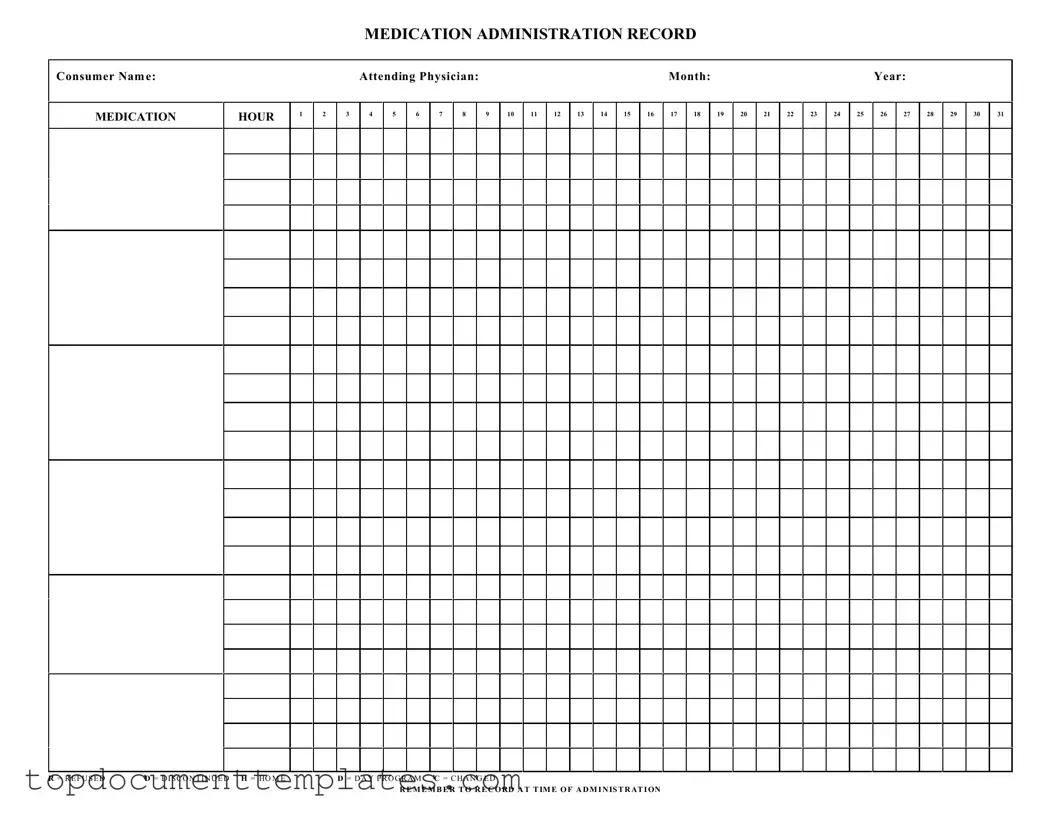The Medication Administration Record Sheet is an essential tool used in healthcare settings to ensure that patients receive their prescribed medications accurately and on time. This form includes several key components, starting with the consumer's name and the attending physician's information, which helps identify the patient and their primary healthcare provider. It is organized by month and year, allowing for easy tracking of medication administration over time. Each day of the month is represented in a grid format, with designated spaces for recording the specific medications administered at various hours throughout the day. Additionally, the form includes notations for situations such as when a medication is refused, discontinued, or changed, which are marked with specific letters for clarity. This systematic approach not only aids in maintaining accurate records but also serves as a communication tool among healthcare staff, ensuring that everyone involved in the patient's care is informed about their medication regimen. Remembering to record the time of administration is crucial, as it contributes to a comprehensive understanding of the patient's treatment and adherence to their medication schedule.
